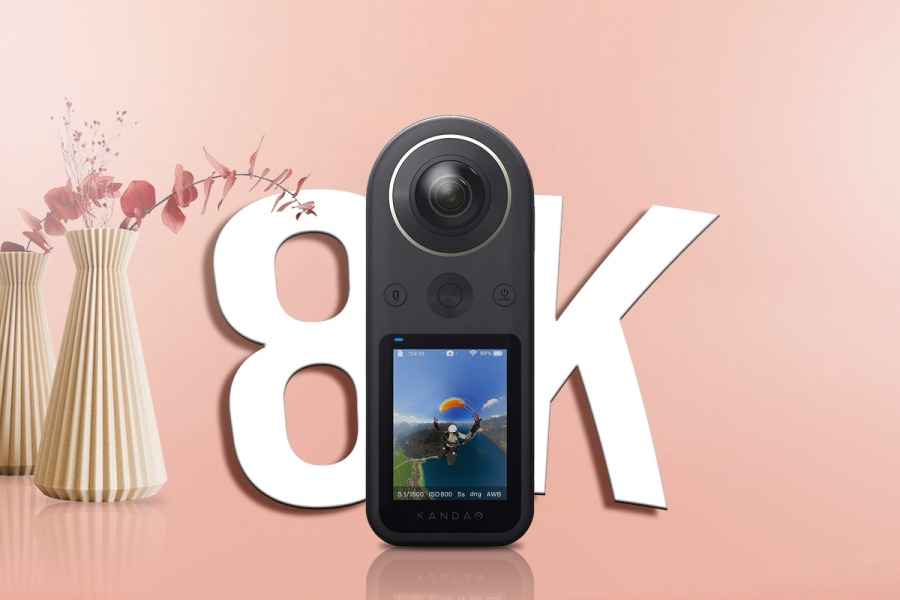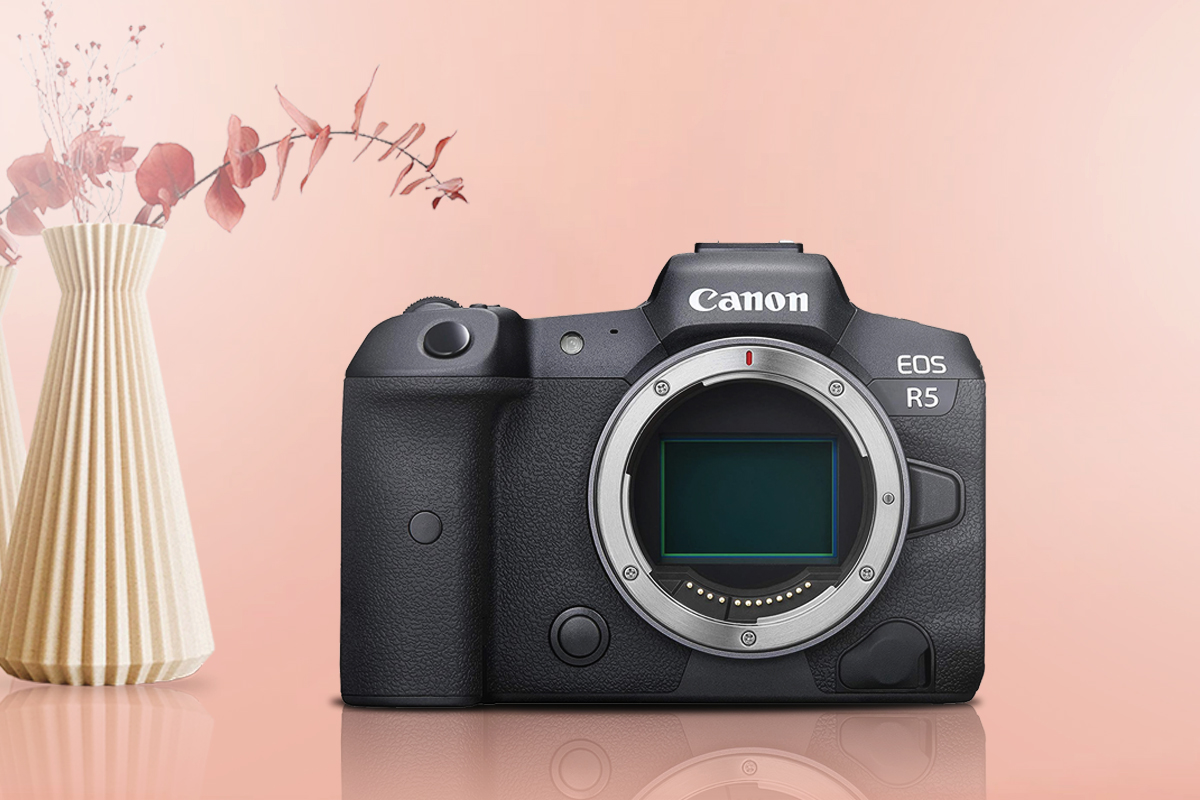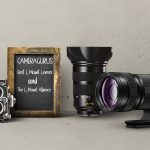
I recall being satisfied with a Full HD resolution a decade ago; having an HD TV back then meant something.
In today’s world, 4k is becoming the norm, while FULL HD can be found on even the most basic devices. Since 4K is no longer a big deal, a new video format is on the horizon, 8k.
Many camera companies are attempting to improve and develop this format.
For the average Joe, 8K was a pipe dream; we could only witness it on high-end cinematic cameras like Red, which costs around $70,000 or even more who knows. Thanks to modern technology now we even have consumer cameras that are capable of shooting at 8k.
While 8k cameras still remain at a price that is hard to swallow, they are no longer a pipe dream; with some savings, you can get one from well-known companies such as Sony, Canon, and even Nikon.
Without wasting time further, let’s see those 8k Cameras.
A Quick Look at My Favorite 8K Cameras
| Image | Product | Features | Price |
|---|---|---|---|
Best 8k Action Camera  | 8.6 | Check Price On Amazon | |
Best 8k Camera from Canon  | 8.5 | Check Price On Amazon | |
Best 8k Camera from Sony  | 9.1 | Check Price On Amazon | |
 | 8.8 | Check Price On Amazon |
Key Takeaways
- Everything is evolving quickly, and 8K cameras are currently the latest format and trend.
- In this situation, businesses like Sony, Canon, and Nikon have revolutionized and offered us a wide range of excellent 8K cameras.
- Since I like anything made by Sony, the Sony Alpha 1 would be my ideal choice if I decided to buy an 8K camera.
- The Canon EOS R5 is a good option because I get the impression that many other people also adore Canon.
- Ensure the 8K camera you buy has excellent video capabilities and a stunning design.
Top 3 Best 8k Cameras
3. KANDAO QooCam 8K – Best 8k Action Camera

What I Like
- Strong image stabilization
- OLED preview touchscreen
- 4K slo-mo
What I Don’t Like
- Pricey
- Battery life could be better
We begin with a camera that is quite interesting. It’s a 360-degree action camera that records in 8K as well.
The KANDAO QooCam was the world’s first 8K pocket 360 camera when it was released, and it is still the only 8K pocket, or say action camera available to customers.
The QooCam is underestimated, but the value it gives for the price is slowly trying to give KANDAO the respect they deserve.
I hinted at its design earlier; it’s essentially a pocket action camera. However, for obvious reasons, it is slightly larger than its 360 peers.
It weighs 228g and measures 5.71 x 2.24 x 1.3 inches.
When the QooCam 8K is turned on, the large 3,000mAh built-in battery works hard, to the point that you can hear its processor buzzing constantly, but don’t worry, you’ll get used to it.
For the 360-degree effect, a fisheye lens is attached on both sides of the camera. On one side, there’s an OLED touchscreen, while on the other, there’s a microSD card slot, a USB-C charging port, and a microphone output – all of which contribute to the 360-degree, 8K impression we’re after.
As far as recording goes, for its size, the capabilities are more than what we look for.
It captures content in 8K at 30fps or 4K at 120fps for that slow-motion effect. I would have loved to see a 6K at 60 frames per second, or alternative frame rates in general, for those who wish to drop the resolution for more frames per second, and, of course, to save space.
However, I am generally pleased with its performance.
The battery life, on the other hand, is remarkable, lasting 90 minutes when recording in 8k, indicating that you may extend the recording time by lowering the resolution.
Why should you buy it?
The value that this camera brings to the table is incredible; it won’t break the bank while giving you a glimpse into the realm of 8K. If you are a vlogger or someone who enjoys capturing themselves while doing sports, I strongly advise you to purchase this camera.
Nevertheless, it still remains a pocket/action camera, and having really high expectations for it, will end with disappointment.
Sample Pictures of KANDAO QooCam 8K



2. Canon EOS R5 – Best 8k Camera from Canon

What I Like
- Fast and accurate autofocus
- Big and great EVF
- Swing-out touch LCD
- Great 45MP full-frame sensor
What I Don’t Like
- Battery life could be better
Canon makes it on the list with their EOS R5.
To say that this camera is “great” is an understatement. It is a whole powerhouse on its own; with crazy recording capabilities and skills that are hardly matched. You won’t have to worry about anything else if you can get beyond the outrageous cost. With this camera, everything is taken for granted.
Design-wise, Canon like always doesn’t stray away from their traditional design, it screams “I am a Canon Camera”, as soon as you pick it up, you will notice the familiarity. Nothing wrong with that, I’ve had no problems with their design.
In short words, “if it ain’t broke don’t fix it”
It’s different, of course, because it’s mirrorless, and touchscreen controls and screen-based use are more prevalent.
The screen, for example, is ideal for waist-level and overhead photography, and you can even rotate it all the way around if you wish.
On the other hand, I am a huge fan of electronic viewfinders.
It’s eye-catching, and despite being a digital OLED display, it has a refresh rate of 120Hz which greatly reduce problems that EFVs encounter.
The EOS R5 is generous with connectivity. To connect it to a smartphone, tablet, or computer, use WiFi or even Bluetooth. The USB-C port may be utilized for both data transfer and in-camera charging.
The EOS R5 has a 45-megapixel sensor, which is the highest-resolution Canon camera we’ve seen in a long time, and it puts it up against some very capable rivals.
No doubt that is capable of recording in 8k, it would be a shame if it cants with the sensor that it features.
8k resolution ranges from 24 to 30 frames per second, whereas lower resolutions increase the frames; for example, you can record 4k at 60 frames per second.
The battery life is rated at 220 shots with the finder and 320 with the LCD, but you can get a lot more with the power-saving option, which is 320 shots with the finder and 490 with the LCD.
Why should you buy it?
The EOS R5 excels in every area where its predecessors failed. It doesn’t matter if the image quality or the recording quality is poor.
This is a fantastic all-around camera that will appeal to any Canon customer, so if the price isn’t an issue, go for it.
Sample Pictures of Canon EOS R5



1. Sony Alpha 1 – Best 8k Camera from Sony

What I Like
- Amazing autofocus and tracking
- Internal 10-bit 8K recording
- Stacked full-frame 50MP sensor
- 5-axis stabilization
What I Don’t Like
- 8K video chews through battery
Of course, Sony is the other manufacturer that could deliver an incredible 8K camera. If you crammed all of Sony’s flagship cameras together, you’d end up with the Sony Alpha 1, a camera that can do everything.
It’s a premium camera with a premium appearance. The Alpha 1 is well-made, having a magnesium alloy chassis that makes it fairly durable, and surprisingly enough, it still manages to be lightweight. It also comes with weather protection to withstand dust and water. You can pretty much take it everywhere, it is made to endure what you will.
The above options EVF was splendid, but oh boy the EVF Alpha 1 offers, is just out of their league.
The Alpha 1 has a 9.44 million-dot QXGA OLED electronic viewfinder and It features a splendid 240 fps refresh rate. This offers a view that is nearly identical to that of an optical viewfinder despite the fact that it is an EVF.
Behind the hood, this camera has a 50.1MO full-frame Exmor RS CMOS sensor and a BIONZ XR image processor. They’re both extremely powerful on their own, when combined, they give the rivals a run for their money.
It doesn’t stop there, the continuous shooting speed is 30 frames per second, and the pictures are extremely detailed, with incredible colors and clarity.
The autofocus on this camera is incredible; Sony has earned a name for themselves with their uncanny autofocus, but the A1 improves on it even further.
Sony continues to push the boundaries with their uncanny autofocus, this time it has Real-Time Af for birds like Human and Animals AF wasn’t impressive enough.
Don’t even think about it; the Sony A1 can take films in 8K at 30fps and 4K at a blistering 120 frames per second in 10-bit color.
As far as battery life goes, it sits decently at 430 shots, which is quite impressive for a powerful camera like the Alpha.
Why should you buy it?
If you’re considering buying an 8K camera and usually picture wildlife or hunting, do yourself a favor and get the Alpha 1.
The AutoFocus this camera provides will not be found in any other camera, be it from the Big Dogs or any other manufacturer; it is pretty much unbeatable.
Not only does it have excellent image quality, but it also has incredible video capabilities; however, the price is a serious obstacle.
Sample Pictures of Sony Alpha 1



Nikon Z 9

If you are a Nikon user and refuse to change the brand of your camera, I got some good news for you.
The Nikon Z 9 is another upcoming consumer 8k camera from Nikon that hasn’t been released officially yet.
I can’t talk about it yet since a new trusted source says that the flagship model Nikon Z9 will be supplied to authorized dealers in January 2023. That’s 8 months away from the time I am writing this article. The price is expected to be around $5,499.
Buying Guide: Things You Need To Consider Prior To Buying

Although they are high-end cameras and being great performers is taken for granted here, they still come from different manufacturers meaning they are not the same.
Image Capabilities
I am well aware that if you are searching for an 8K camera, it means you are buying the camera for its video recording capabilities.
All of the above are consumer-grade 8ks, meaning that you will not always be dependent on their recording abilities but they will also switch to stills from time to time.
Good sensors and quality, in general, are always welcome, so make sure your camera doesn’t lack in some areas just because it succeeds in one.
Video Capabilities
When it comes to video capabilities, being 8K will not be enough. Even some cheap Chinese brands have 8K written all over them.
Besides being 8k, which is a resolution of 7680×4320 pixels, you want the camera to also have a good frame rate.
8k in 60fps is really demanding, but in my opinion, 30fps will also do the work you need just fine.
Something worth mentioning from my perspective is that it is occasionally worth risking the high resolution of 8K in exchange for higher frame rates. An 8K camera should easily be capable of recording in 4K at 120 fps or at least 60 fps, which are both excellent frame rates.
There are also auto-focus features that come with video capabilities, so make sure you also take those into account.
Design
When it comes to the key things, the camera’s construction is another factor to consider.
Why is it, you might wonder? I’ll only use the camera to take pictures.
Well, that’s true, but having a robust camera that won’t take you through weight lifting sessions is something that every photographer seeks. Especially when you think of a camera that you will solely purchase for recording, meaning there will be a lot of movement around.
You can use a third-party device to help you with the extra weight, which is a tripod and a gimbal. However, if you are shooting only handheld, you should consider the weight of the camera. It will come in handy when you buy the rest of the camera equipment.
Also, and this is quite important, check if the camera has weather sealing so it withstands those sudden rains.
Price
Well, if 8k cameras really interest you, I think that pretty much you should be aware of the painful price that they come with.
Professional cinematic cameras that are used in Hollywood usually cost at least 50,000.
So yes, we should be thankful to Nikon, Sony, and Canon for offering us 8k cameras at a price tag that has logic behind it.
Price is important when it comes to buying an 8 camera due to the expensive price tag we just spoke about. A wrong buy will seriously harm your pocket.
Frequently Asked Questions

What is the resolution of 8k?
The 8k resolution is 7680×4320 pixels, which is twice as large as the 4k resolution of 3840 x 2160 p.
The difference between 4k and 8k?
There’s not much difference between the resolution, which 8k has the double resolution of 4k. The frame rate is also another thing that contributes to this park, usually, lower resolutions will have more fps.
Does a 16k Camera Exist?
There isn’t one yet, but the Sony F65, a 65k dollars professional movie camera, has given us a glimpse of it. The producers used a single Sony F65 camera with an anamorphic lens to reach 16K native resolution.
Final Words
Buying an 8K camera is not like buying groceries.
I wouldn’t recommend buying an 8K camera unless you are a professional who wants to step up your photography game.
Hobbyists, for example, can be more than happy with a Full HD camera, while mediocre photographers should be fine with 4k.
There’s no need to throw in tons of cash in 8K since it is a bit overkill and it is also hard to edit the photos afterward.
However, I am not saying that they are bad, I just tend to care for your banks’ well-being.
Jokes aside, If you are a photographer who is confident in your camera skills, don’t hesitate to go after an 8K camera. It will be worth it.
Further Reading
If you liked what you read so far, you can keep reading some other nice articles below.
If you need a camera to capture short films on a budget, I’ve got you covered with some amazing budget camcorders.
If you find yourself interested in Canon cameras, I have listed some great Canon cameras, so don’t forget to check them out. Or if you want to see some great cameras from Olympus, an underdog in the photography industry.
If you are done with cameras and are seeking a monopod, no problem. I even have some tripods you can check out.
You can also read intriguing blogs like “Why do I look bad in photos?” or “Tripod vs. Monopod“, and much more.
This concludes the day’s article. Hopefully, everything was clear.
Enjoy!

Photo & Videographer
A photographer with a passion for capturing the beauty of nature and the human form. My work has been featured in galleries and publications around the world, and I strive to create images that evoke emotion and tell a story.



